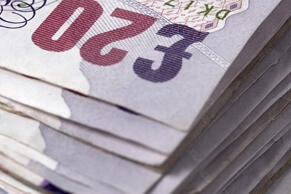
Turn a tax trap into a tax-efficient golden handshake
Termination pay or earnings?
Tricky tax and NI rules apply to lump sums paid by employers to employees or directors who are leaving or or have left their job. A £30,000 exemption can apply to such payments but availability of this exemption is more restricted than generally appreciated.
For example, payments made to an employee or director which are a reward for past services are taxable as earnings and fully liable to PAYE tax and employees’ and employers’ NI. Even if it’s not a reward for services there must be no contractual or implied entitlement to it.
Golden handshakes
A golden handsake is a reward for past services even if it’s not a contractural entitlement. It’s therefore earnings and liable to PAYE tax and NI without the £30,000 deduction. HMRC’s view is that if the payment is being made to someone who has reached 55 (57 from 2028) or soon will, it counts as an employer-financed unapproved retirement benefit (EFURB). This doesn’t offer any tax advantage as such payments still count as taxable earnings.
Example - golden handshake as EFURB. Dan, a founding shareholder and director of Acom Ltd, is 60. He is resigning his directorship and leaving the company after 25 years. The directors wish to send him off with a golden handshake of £60,000. This counts as an EFURB and is liable to income tax and NI. Assuming Dan’s other income is such that the whole payment is taxable at 40% and NI at 2% and he will receive a net sum of £34,800 at a cost of £68,280 (£60,000 x 13.8%) to Acom before corporation tax (CT) relief.
While making a payment which counts as an EFURB doesn’t have any tax advantage it indicates a possible tax-saving alternative.
A golden handshake can be tax and NI free if, instead of being a cash payment, it’s in the form of an employer’s contribution to a registered pension scheme. This is a rock-solid way to provide tax and NI-free cash to a departing employee or director. When they reach 55 they can access some or all of the money from the pension fund; 25% of it will be tax and NI free and only the balance taxable as income.
Example - golden handshake pension contribution. The circumstances are the same as the previous example except that Acom pays £60,000 as an employer pension contribution for Dan. He has not previously taken any of his pension savings. Assuming this is within his annual allowance, including any unused amounts from the previous three years, Dan and Acom’s tax and NI position is:
Dan’s pension fund increases by £60,000; he can take £15,000 of this immediately tax and NI free but the balance is taxable. Assuming Dan is liable only to basic rate tax in his retirement he can draw the balance of the pension money, say, £45,000 which after tax is £36,000. His net income derived from the £60,000 is £51,000 (£15,000 + £36,000). A considerable improvement on £34,800. Acom is also better off because the pension contribution is not liable to employers’ NI. Its cost is therefore £60,000 before CT relief.

